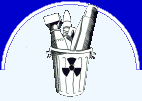


 |
 |  | ||||
|
|
|
|
| |||
| vous etes ici Homepage > News > External sources > AREVA: France’s nuke power poster child has a money melt-down | |
|
AREVA: France’s nuke power poster child has a money melt-down By Harvey Wasserman Published 1 April 2009 The myth of a successful nuclear power industry in France has melted into financial chaos. With it dies the corporate-hyped poster child for a "nuclear renaissance" of new reactor construction that is drowning in red ink and radioactive waste. Areva, France’s nationally-owned corporate atomic façade, has plunged into a deep financial crisis led by a devastating shortage of cash. Electricite de France, the French national utility, has been raided by European Union officials charging that its price-fixing may be undermining competition throughout the continent. Delays and cost overruns continue to escalate at Areva’s catastrophic Olkiluoto reactor construction project in Finland. Areva has admitted to a $2.2 billion, or 55%, cost increase in the Finnish building site after three and a half years. The Flamanville project---the only one now being built in France---is already over $1 billion more expensive than projected after a single year under construction. In 2008, France’s nuclear power output dropped 0.1%, while wind generation rose more than 37%. Attempts to build new French reactors in the US are meeting stiffened resistance. And the definitive failure of America’s Yucca Mountain nuke waste dump mirrors France’s parallel inability to deal with its own radioactive trash. Widely portrayed as the model of corporate success, reactor-builder Areva is desperately short of money. As it begs a bailout from its dominant owner, the French government, Areva’s mismanagement and overextension in promoting and building new reactors has wrecked its image in worldwide capital markets. According to Mycle Schneider, Paris-based author of "Nuclear Power in France---Beyond the Myth", Areva shares have plunged by over 60% since June 2008, twice as much as the CAC40, the standard indicator of the 40 largest French companies on the stock market. Areva’s hyper-active public relations department has made much of recent orders to build two new reactors in China. But it’s now begging France’s taxpayers for some $4 billion in short term bailout money, and may need still another $6 billion more to pay for investments in uranium mines, fuel production and heavy manufacturing ventures. Areva will also need more than 2 billion Euros (about US$3 billion) to buy back shares in its nuke reactor unit after Germany’s Siemens pulled out of a joint venture. There have been significant, highly-publicized bumps in the Chinese transaction. And Areva may now be forced to pony up billions more in penalties from delays and overruns at its reactor construction fiasco in Finland. The Finnish government will also have to meet additional costs from trading in carbon emissions because it had firmly counted on the new reactor to supply "green" power as of this year. Olkiluoto is now not expected to deliver electricity before 2012. Areva’s woes have caused French President Nicolas Sarkozy to face possible job cuts and asset sales at the government-controlled energy giant, which was formed in 2001. China’s two-reactor order includes a promise from Areva to supply up to 20 years worth of nuclear fuel. Areva also hopes to sell at least seven reactors in the US, but these plans are meeting stiff resistance. Complex ownership and licensing battles have erupted at Constellation Energy, meant to be the conduit for two new reactors in Maryland. Ratepayer revolts in Florida and Missouri have arisen over plans to force the public to pay for new reactors as they are being built. Electric rates in the Sunshine State have already begun to soar due to proposed nuke construction, prompting an angry grassroots upheaval. The potential American reactor market has also been bloodied by the definitive disposal of the proposed high level dump at Yucca Mountain, Nevada. After decades as the centerpiece of America’s "solution" to the nuke waste problem, with at least $10 billion spent on it, Yucca’s failure underscores France’s own waste dilemma. The French reprocessing center at La Hague has come under widespread attack for its massive radiation discharges into the English Channel and surrounding atmosphere. The plant has produced over nine thousand containers of extremely high level wastes with no safe place to go. Its by-product of plutonium has complicated global attempts to curb the spread of radioactive materials capable of being turned into nuclear bombs. In addition to the reprocessing wastes, without a permanent repository of its own, France’s 58 reactors have also accumulated over ten thousand tons of spent fuel rods, as the 104 units in the US constantly generate. Areva says it hopes to raise cash by selling part of a uranium enrichment plant under construction in southern France to Japan’s Kansai Electric. Other asset sales may be hampered by slumping market values. Areva also hopes to partner with US weapons builder Northrop Grumman to build heavy reactor equipment in Virginia. But on March 11, European Union regulators raided EdF offices because "suspected illegal conduct may include actions to raise prices on the French wholesale electricity market." The stunning action against the massive conglomerate, which is 84.8% owned by the French government, could result in huge fines. The EU says EdF may have manipulated prices and redrawn contracts for some 60 key corporate users. Nuke backers constantly tout that close to 80% of France’s electricity comes from reactors whose power flows through EdF. But Areva’s cash shortage and EdF’s price-fixing scandal underscore the huge financial imbalances imposed by building and operating atomic reactors. According to Schneider, "EDF’s shares dropped by over 40% during the last six months alone. When management in February 2009 announced that larger than expected charges had corroded profits, share value dropped by 7% overnight and continued to fall since. The EDF share now stands 12% below the value when it was first introduced to the stock market in November 2005. Not really a brilliant investment." EdF and Areva are at the core of what has been labeled as the global "nuclear renaissance". Their escalating money problems underscore an epic failure that has been a significant factor in the current global economic crisis. After a half- century of massive government subsidies in the US, UK, France and elsewhere, atomic energy still staggers under an unsustainable load of high construction costs and uncompetitive prices for the electricity it generates. EdF’s recent $17.5 billion takeover of nuke utility British Energy came with a warning from EdF officials that England’s commitment to wind turbines could undermine the future of nuclear power. The statement evoked widespread astonishment and scorn from the environmental community. In the financial community, concerns still linger over the half-trillion-dollar (and still climbing) cost of the 1986 explosion at Chernobyl. The instant $900 million conversion of the "asset" at Three Mile Island into an epic liability occurred 30 years ago this month. (The conversion of Michigan’s Fermi I reactor at Monroe into a $100 million molten mess happened October 5, 1966). The costs from the earthquake last year that crippled seven reactors at Japan’s Kashiwazaki are still rising. The failure of Yucca Mountain has converted billions of dollars in utility and taxpayer investments into pure waste. Growing grassroots movements in Vermont and elsewhere threaten to cut off license extensions and shut American reactors at which decommissioning funds have been slashed by the collapse of US investment funds. The argument that atomic energy provides an answer for global warming turned to a deep embarrassment in France when reactors were forced to shut during the summer heat because they were raising river temperatures far beyond legal limits. In another case, a reactor containment had to be sprayed in order to cool it back to operational temperatures. Similar shutdowns came at a reactor in Alabama. But as massive cost overruns and delays continue to escalate at Areva’s showpiece reactor construction fiasco in Finland, the industry clamors for unlimited access to taxpayer funds. The surging stream of atomic failure continues to guarantee that private investors will instead favor true green technologies like solar, wind and efficiency. Thus in France, as elsewhere, the "nuclear renaissance" may be still-born. In 2007, world nuclear electricity generation dropped by an unprecedented 2%. According to Schneider, in 2008, for the first time in nuclear power history, no new reactor was connected to the grid anywhere on Earth. As Schneider’s "Nuclear Power" in France — Beyond the Myth" points out, after 35 years of nuclear power development, the French "nuclear dreamland" gets only 16% of its final energy from nuclear power. Commissioned by the Greens-EFA Group in the European Parliament (Brussels, December, 2008), Schneider’s report shows that despite its huge nuclear commitment, almost half of France’s energy consumption still comes from oil. In fact, says Schneider, "the wasteful nature of the French economy and households leads to a higher per capita consumption of oil than in Germany, Italy, the UK or even the EU on average." "Those who think that nuclear power would be a cheap and clean way to render the US less dependent on oil should have a close look at the French record." At the French heart of its "renaissance," the nuclear clock is winding down, not up. Time is running out for a radioactive technology that, after fifty years, remains unable to muster a sustainable level of private financing, shows no real promise of ever paying for itself, and has now plunged into deepening financial chaos. — French translation by ACDN here. IN ADDITION Press Release : "AREVA launches the Chalon 1300plan", 2 April 2009 Another proof of how wide is the gap between the "renaissance" talks on the leading role of nuclear power in climate change / energy security policies, and the industry’s actual ability to deliver. One well identified limitating factor is the capacity of the plants which forge the main components of the reactors’ core containment. AREVA just announced today the increase of capacity of its French plant in Chalon. It is currently the only plant able to forge the largest component of the EPR reactor, together with the Mitsubishi Heavy Industries and Japan Steel Works plant in Japan. Assuming that this becomes effective shortly, AREVA would be at most able to build 30 EPRs between now and 2020, and less than 60 between now and 2030. This is consistant with AREVA’s declared ambition to get one third of an estimated 100 to 300 new reactors market between now and 2030 (and I’m not discussing here the soundness of this projected market estimate...). Also, the increased capacity of the plant will match the potential for new nuclear power capacities of 4.9 GWe per year at most from AREVA, representing at least one third of the total (hence less than 15 GW per year). This has to be compared to fast increasing market figures for renewables. The global market for wind generation was already 27.2 GW in 2008 (source GWEC). The wind industry forecasts an increase at 56.3 GW per year by 2013. And photovoltaics already reach 5.5 GW of new capacity market in 2008 (source EPIA). Yves MARIGNAC yves.marignac@wise-paris.org
|
Also in this section | ||||||||||||||||||||||||||||||||||||||||||||||||||||||||||||||||||||||
| visites : | 1273736 |
|
Site powered by SPIP
design et fonction Easter-Eggs |